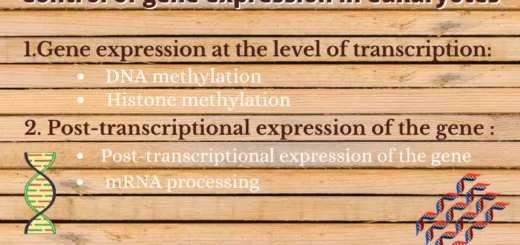[PDF] 10 Rod Cells and cone cells Differences | Rod Cells Vs cone cells Biology PDF Notes
Understanding the Differences Between Rod Cells and Cone Cells in the Retina
Introduction
Let’s see 10 key Rod Cells and cone cells Differences. In the realm of vision, the human eye is a marvel of complexity. The retina, a layer of tissue at the back of the eye, contains specialized cells called photoreceptors that enable us to perceive light and translate it into meaningful visual information. Among these photoreceptors, two types stand out: rod cells and cone cells. In this article, we will delve into the unique characteristics and functions of rod cells and cone cells, shedding light on their pivotal roles in our visual perception.
Rod Cells: The Night Vision Specialists
Rod cells are the true heroes when it comes to low-light conditions and night vision. They possess an extraordinary sensitivity to dim light levels, allowing us to navigate through the darkness with relative ease. What sets rod cells apart is their pigment called rhodopsin, which efficiently absorbs light in the blue-green range of the spectrum. This specialized pigment makes rod cells particularly adept at detecting subtle changes in light intensity.
In terms of distribution within the retina, rod cells are densely packed in the peripheral regions and less densely distributed in the central retina. Consequently, peripheral vision becomes more reliable in low-light situations compared to central vision. However, it is worth noting that rod cells do not provide any information about colour. Their primary function is to detect changes in light intensity, ensuring our ability to perceive objects even in the absence of colour cues.
Cone Cells: Unleashing the Power of Color
While rod cells handle our night vision, cone cells take the lead in bright conditions and colour perception. These remarkable photoreceptors are highly sensitive to higher light levels and are responsible for our ability to discern a rich spectrum of colours. Unlike rod cells, cone cells contain three different pigments that specifically absorb light in the blue, green, and red regions of the spectrum. It is the combined signals from these three types of cone cells that allow our brain to create a vivid perception of colour.
Cone cells are densely concentrated in the central region of the retina, known as the fovea while being less abundant in the peripheral retina. This distribution pattern grants us superior colour perception in central vision, making it the go-to for appreciating the intricate details and hues of the visual world. However, it’s important to note that cone cells are less effective in low-light conditions, as they require higher light levels to function optimally.
The Significance of Rod and Cone Cells in Visual Perception
Understanding the differences between rod cells and cone cells is crucial to comprehend how our visual system works and how we perceive the world around us. In low-light conditions, such as during nighttime, our visual system heavily relies on rod cells to detect environmental changes. This is why the world may appear black and white or monochromatic when light levels are dim.
On the other hand, in brighter conditions, such as during the day, cone cells take the spotlight, playing a pivotal role in colour detection and capturing fine details. It is the combined efforts of rod cells and cone cells that enable us to form a comprehensive and nuanced representation of the visual world.
Rod Cells Vs cone cells:
| Serial Number | Characteristic | Cone Cell | Rod Cell |
|---|---|---|---|
| 1 | Function in Vision | Photopic (bright light) | Scotopic (dim light) |
| 2 | Sensitivity to Light | Less sensitive | Highly sensitive |
| 3 | Location in Retina | Central (fovea) | Peripheral |
| 4 | Light Absorption | Different pigments | Rhodopsin |
| 5 | Full-color perception | Limited (no colour) | Full-colour perception |
| 6 | Spatial Resolution | Higher | Lower |
| 7 | Visual Acuity | Higher | Lower |
| 8 | Role in Vision | Central vision | Peripheral vision |
| 9 | Detail Perception | Detailed | Limited |
| 10 | Motion Detection | Limited | Good |
![[PDF] 10 Rod Cells and cone cells Differences | Rod Cells Vs cone cells Biology PDF Notes 1 [PDF] Rod Cells and cone cells Differences](https://biologywala.com/wp-content/uploads/2023/07/Differences-Between-Rod-Cells-and-Cone-Cells-1024x1024.webp)
Frequently Asked Questions about Rod Cells Vs cone cells
What are rod cells and cone cells?
Rod cells and cone cells are two types of photoreceptor cells located in the retina of the eye. They are responsible for converting light into electrical signals that are transmitted to the brain through the optic nerve. Rod cells are more sensitive to dim light and are primarily responsible for night vision and peripheral vision. On the other hand, cone cells are less sensitive to light but are responsible for colour vision and sharp central vision.
How do rod cells and cone cells differ in function?
Rod cells and cone cells have distinct functions based on their structural and functional characteristics. Rod cells are highly sensitive to light and are specialized for vision in low-light conditions. They contain a pigment called rhodopsin, which enables them to detect even small amounts of light. Rod cells are responsible for black-and-white vision, as well as detecting motion and shapes.
In contrast, cone cells are responsible for colour vision and provide detailed vision in well-lit conditions. There are three types of cone cells, each containing a different pigment that is sensitive to either red, green, or blue light. These pigments allow cone cells to perceive a wide range of colours by combining the signals from different cone types. Cone cells are concentrated in the centre of the retina, particularly in an area called the fovea, which is responsible for high visual acuity.
How do rod cells and cone cells contribute to vision?
Rod cells and cone cells work together to enable vision in various lighting conditions. In the dim light, rod cells are primarily active, providing us with low-light vision. They allow us to see objects in shades of grey but provide poor detail and no colour perception. This is why our vision at night or in dark environments lacks colour and sharpness.
In bright light conditions, cone cells take over and provide us with detailed colour vision. They enable us to see a wide spectrum of colours and perceive fine details. Cone cells are especially concentrated in the fovea, which allows us to focus on objects with precision. The interplay between rod cells and cone cells ensures that we can adapt to different lighting conditions and perceive the world around us accurately.
Can rod cells and cone cells be damaged or affected?
Yes, rod cells and cone cells can be damaged or affected by various factors. Certain genetic conditions, such as retinitis pigmentosa or cone dystrophy, can lead to the degeneration of rod and cone cells, resulting in vision loss. In addition, external factors like prolonged exposure to bright light or certain medications may harm these cells.
Another condition that affects cone cells specifically is colour blindness. In individuals with colour blindness, one or more cone types are either missing or not functioning properly, leading to an inability to perceive certain colours.
Can rod cells and cone cells be repaired or restored?
Currently, there is no known medical treatment to repair or restore damaged rod cells or cone cells. However, researchers are actively studying potential therapeutic approaches, such as gene therapy and stem cell transplantation, to address retinal degenerative diseases.
While these treatments are still in the experimental stage, they hold promise for the future. Scientists are exploring ways to replace damaged or missing photoreceptor cells with healthy ones or stimulate the regeneration of these cells. Although complete restoration of vision may not be possible in all cases, advancements in medical research offer hope for improving visual outcomes for individuals with retinal diseases.
Rod cells and cone cells are located in the?
Rod cells and cone cells are located in the retina of the eye. The retina is the light-sensitive layer at the back of the eye, and it contains millions of photoreceptor cells, including rods and cones. Rod cells are more concentrated towards the outer edges of the retina, while cone cells are more concentrated in the central part of the retina, called the fovea.
Also Read:
Also, read :
- [Download] Osteoblasts vs Osteoclasts: 7 Key Differences| BIOLOGY PDF NOTES
- [DOWNLOAD] Molecular Biology of the Cell The Problems Book 6th edition by John Wilson Tim Hunt
- Download Top 3 Genetics Books
Join SACHIN’S BIOLOGY on Instagram or Facebook to receive timely updates and important notes about exams directly on your mobile device. Connect with Mr. Sachin Chavan, the founder of Sachin’s Biology and author of biologywala.com, who holds an M.Sc., NET JRF (AIR 21), and GATE qualifications. With SACHIN’S BIOLOGY, you can have a direct conversation with a knowledgeable and experienced.
![[DOWNLOAD] Molecular Biology of the Cell The Problems Book 6th edition by John Wilson Tim Hunt 2 [PDF] Molecular Biology of the Cell The Problems Book 6th edition by John Wilson Tim Hunt](https://biologywala.com/wp-content/uploads/2022/02/PDF-Molecular-Biology-of-the-Cell-The-Problems-Book-6th-edition-by-John-Wilson-Tim-Hunt-520x245.webp)

